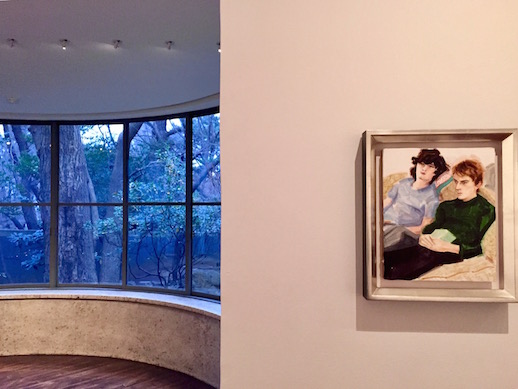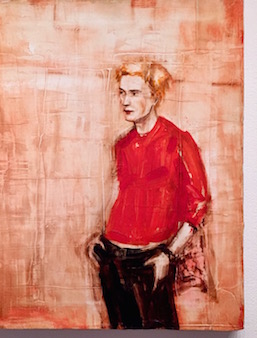“Still Life,” Wonderfully Alive

After a successful 25-year career as a figurative painter, Elizabeth Peyton has presented her first show in Japan at the Hara Museum of Contemporary Art. The artist attended the exhibition herself on opening night, speaking firsthand about her choice of works, the space, and her intentions for the show. She also gave the audience the chance to ask questions about her painterly process.
Peyton handpicked her personal favorite and “not for sale” works for “Still Life,” selecting those with subjects she feels an emotional connection to. These figures and painterly gestures contain many heartfelt memories and were paramount stepping-stones in her career and growth as a painter. Interestingly, the work on display at the Hara was intuitively selected and not based on external opinions or reviews. More emphasis fell on how Peyton as an artist felt about her own work over her extensive career. Now at a point where she is able to look back on her life and trajectory as an artist, the Hara’s intimate space makes this as a truly special exhibition for her.
Peyton developed her work all over the world, travelling and painting at the same time. She would frequently paint from life, but some works are based on source materials such as photography, video, and found footage. Smudges and other serendipities are included in her paintings. There is a certain consistency in her cross-cultural works, even though they were made in different parts of the world, a notion suited to the Hara Museum with its architectural and aesthetic ties to multicultural Japan.

The press interview offered insight into recent influences in Peyton’s work. She spoke about the Metropolitan Opera House in New York and Jonas Kaufmann. She admires Kaufmann’s ability to convey crushing emotion in his work, taking you away from an inexplicable attachment to the past; She desired to capture this in paint. Music is a continuing emotion between people, but Peyton felt that art did not serve that purpose so well when she started making paintings. There are unconscious perceptions at work in both opera and music, and this can relate to the sensations of looking at a painting, also a passive action that stirs feeling. Non-representational artists have long sought to capture this abstract notion in their work, and Peyton continues to try and bridge the same connection today.
It often seems as though Peyton is attempting to tease out and channel emotions: Love, relationships, and connection play big roles in her work and ideals. Saturated colors and contrasts heighten these emotional elements. There is usually some relationship with the subject of her painting, either directly or as a playful take on “fan painting,” displaying a deep-set admiration for people she has possibly never met. The way she captures her subjects in flux heightens the excitement, but also the ambiguity in certain cases. Subjects are caught in moments of passion or natural relaxation, their gazes usually staring off as if in some private reverie.
As Peyton progressed as a painter, her works became more compositionally free and her paint application looser and more experimental. Brushy strokes with little paint encapsulate a sense of immediacy and movement. There are even experiments with scale, but the majority of the work is small and intimate, welcoming the viewer to come in close and indulge in its expressive qualities.
The Hara museum shelters Peyton’s work in a particular way that feels very intimate and appropriate for the scale of Peyton’s works, allowing negative space to beautifully strengthen one-on-one engagement with each painting. In Tokyo it is quite unusual to find former homes functioning as museums such as the Hara does, making it an exceptional match with Peyton’s work. “Still Life” is balanced and straightforward in its arrangement, presenting a clever chronology in paintings, a beautiful display of the artist’s technical development, and most importantly, insight into Peyton’s growth and understanding of her work and self.
Simon DeBoer
Simon DeBoer



